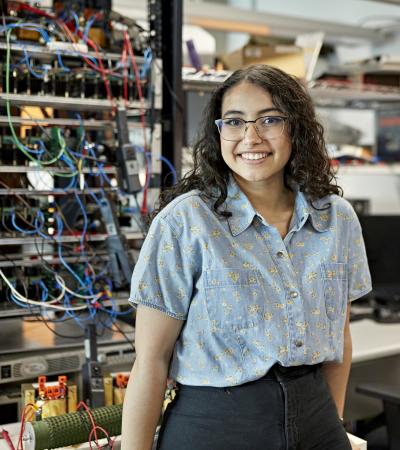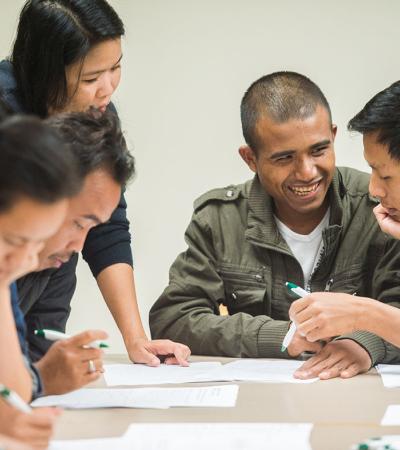"Money Madness Teen Lock-in" took place at The Florence County Library System in 2012 and remains the largest number of teens ever recorded for an event at the library.
A teen lock-in gets its name from the fact that it takes place after hours when the library is closed (locked) to the public. Food, games, and prizes were used to entertain and educate 189 teens in financial literacy.
Advanced Planning
The goals of the Money Madness Teen Lock-in were to have 95% of participants gain knowledge of financial concepts and to have 50% report engagement in one of the following activities as a result of what they learned at the event: 1) Setting up a savings account, 2) Taking steps to avoid credit card debt such as saving up for purchases rather than buying on credit, 3) Creating a personal budget.
Planning started on March 20, 2012, about 7 weeks before the program with a meeting between the project manager, the Children’s Services Manager, and the Teen Librarian. A basic outline of the event design and program goals was completed about a week later. The date of May 4 (Friday) was chosen to maximize student attendance before standardized testing started the following week. The event would start at 6:00 p.m., with a pizza dinner served at the beginning, followed by several educational games, and prizes awarded at the end.
The library was able to utilize its existing partnership with the South Carolina Department to develop the educational aspects of the event.
Marketing
During the last part of April, over 9,000 color flyers were printed and bundled in batches for distribution to the schools. An additional 1,000 flyers were made available at headquarters and branch libraries and also distributed to various civic groups. The flyers were approved by the school district approximately 10 days before the event. At that time, project leaders delivered the bundled flyers to all of the public and private school offices in the greater Florence area.
While delivering the flyers, the managers were able to speak to school officials to educate them about the value of the event and encourage the timely distribution of the flyers to the students.
Prizes factored heavily in the promotional campaign as a way of generating excitement among the teens. Funds were expended to provide an iPod Nano and a Kindle Touch E-Reader as prizes. Additionally, non-grant funds were used to procure a $100 gift card as an additional prize.
The pizza and prizes would figure prominently in the flyer design. The required permission slip for this after-hours event was printed on the back of all the flyers. By the registration deadline of May 3, 220 students had registered.
Budgeting
Money was spent to purchase food and beverages for a pizza dinner for 189 teens. In addition to pizza, meal-related items included soft drinks, bottled water, and assorted candy, napkins, and paper plates.
Activity supplies included a roll of standard tickets and assorted rolls of duct tape in a wide variety of patterns and colors for the duct tape wallet craft. The Financial Football online game was supplied for free through our funding partners, and the game show buzzers for the financial “game show” were supplied by the South Carolina Department of Consumer Affairs.
The primary marketing expense was the printing of over 10,00 full color 8 ½ X 11 flyers with registration form on the back. Additional expenses included the prizes of the Kindle and the iPod, and a $100 gift card (purchased with donated funds).
Day-of-event Activity
On the day of the event, 15 staff members were on hand, including two teams of two staff members each equipped with registration lists. Staff were stationed in both library parking lots to make sure that only teens who had turned in parental permission slips would be allowed to stay for the program. Staff also reminded parents of the pick-up time of 8:00 p.m. so that the participating teens would have their rides waiting for them when the program ended.
Tickets were given out to each registered teen for the prize drawings and this also served as their door pass so that the Teen Librarian would let them into the meeting room. Fortunately, there were enough tables (23), chairs (189) and food to accommodate the large and boisterous crowd of teens in the library’s large meeting room. The sheer size of the crowd, at 189, was a challenge but thanks to the registration process, was not unexpected. We were also fortunate that several of the staff on hand had experience working with large groups of children and teens and were able to keep the energetic teens orderly and attentive (for the most part) to instructions about the planned events
Program Execution
After the 189 participants finished eating, they were given instructions about the agenda and were divided into three groups for rotating breakout sessions.
Flexibility was the keyword when implementing individual activities. The game show activity with 20 multiple choice questions was shortened to 15 and the two game show buzzers were initially used but proved impractical with such a large group of children wanting to participate. Teens were divided into teams and team members were called upon when they raised their hands. Participation was good and even teens who did not answer questions were attentive and interested in the answers to the money questions.
Concepts covered included the true costs of buying and owning a car, the dangers of credit card debt, how compound interest works and why it matters, and the importance of saving money. The duct tape wallet craft proved popular with the teens and the Financial Football online game activity provided an engaging challenge of students' existing financial knowledge while teaching important financial concepts as well. At the end of the program, more than 95% reported learning at least two financial concepts as a result of the activities.
Advice
We would advise working with your teen librarians, partners, and teen advisory board (if your library has one) to help develop activities that are fun, and construct financial literacy goals that are realistic for your target age group.
Behavioral outcomes can be difficult to achieve with any age group and teens are no exception. Keep the event light and fun but orderly by making sure to have a multitude of experienced staff on hand who have plenty of experience implementing similar programs for the same age group.
Effective marketing is also key to getting participation from this age group. Enticing prizes and free food (pizza!) helped to build excitement. By working with the schools to get flyers to all the teen students, we were able to create a “buzz” in which lots of students wanted to participate and there was a “fear of missing out” factor that drove our registration numbers upward. Of course, this also caused us to overshoot the mark a bit, and wind up with more registrations than we had anticipated, but we chose not to limit attendance and ended up with 189 confirmed attendees (which was a teen event record for our library).



